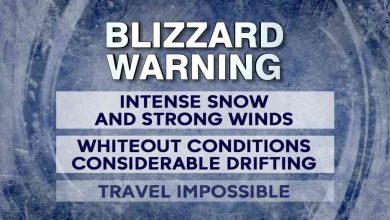Massive Earthquake Strikes Southern Japan
A powerful tremor rocks southern Japan, sparking fears of a catastrophic megaquake—verified truths reveal what’s at stake.

On August 8, 2024, at 4:42 p.m. local time, a magnitude 7.1 earthquake ripped through the waters off Kyushu, Japan’s southern main island. The Japan Meteorological Agency (JMA) pinpointed the epicenter 30 kilometers beneath the Philippine Sea, shaking Miyazaki prefecture and beyond. Nine people were injured, mostly with minor cuts and bruises, but the real terror lies in what this quake signals: a ticking bomb beneath Japan’s shores. For the first time ever, the JMA issued a “megaquake advisory,” warning of a potential magnitude 8-9 disaster along the Nankai Trough. Here’s the raw, verified truth about the event rocking Japan and the world.
A Jolt That Stopped Hearts
The ground heaved in Nichinan city, Miyazaki, as the quake hit. “It felt like the earth was screaming,” a local shopkeeper told NHK TV, describing shelves crashing and glass shattering. The JMA’s seismic intensity scale hit 6-minus in parts of Kyushu, strong enough to topple furniture and crack walls. Trains halted at Miyazaki Station, stranding hundreds. A small tsunami, just 8 inches high, lapped at Miyazaki Port within 30 minutes, but the JMA’s initial 3.2-foot wave warning sent coastal residents scrambling to higher ground.
The USGS later confirmed the quake’s magnitude at 7.1, revising earlier 6.9 estimates. No deaths were reported, and damage was minimal—no collapsed buildings or major infrastructure failures. One man in Kyushu took a tumble down stairs, earning a bruise but nothing worse. Power stayed on, streets stayed lit, and nuclear plants reported zero issues. Yet, the lack of devastation didn’t calm nerves. Seismologists convened an emergency meeting, and their verdict was chilling: this quake heightened the risk of a Nankai Trough megaquake, a monster capable of killing 300,000 and costing $1.8 trillion.
Nankai Trough: The Sleeping Giant
The Nankai Trough, a 900-kilometer submarine trench off Japan’s southern coast, is where the Philippine Sea Plate dives beneath the Eurasian Plate. It’s a subduction zone, a geological pressure cooker that’s unleashed devastation every 100-150 years. The last major quakes here struck in 1944 and 1946, both exceeding magnitude 8. Japan’s Earthquake Research Committee pegs a 70-80% chance of a magnitude 8-9 quake within 30 years, but the August 8 event bumped that risk higher. “This quake was a wake-up call,” JMA official Shigeki Aoki told reporters, urging vigilance for aftershocks and landslides.
A government task force report, released March 31, 2025, paints a grim picture. A Nankai Trough megaquake could trigger 30-meter tsunamis, collapse 2 million buildings, and kill 298,000 people—215,000 from waves alone. Economic losses could hit $1.8 trillion, nearly half Japan’s GDP. The report, cited by Reuters, accounts for inflation and expanded flood zones, upping the stakes from 2012 estimates. Japan’s strict building codes and tsunami drills, honed since the 2011 magnitude 9.1 Tohoku disaster, might save lives, but the scale of a megaquake would test even those defenses.
Eyewitness Chaos and X Buzz
Verified accounts on X captured the panic. @NHK_News tweeted at 4:50 p.m. on August 8: “Tsunami advisory issued for Kyushu after M7.1 quake. Evacuate coastal areas NOW.” Videos showed crowds sprinting uphill in Miyazaki, clutching phones blaring JMA alerts. @BBCBreaking posted: “Japan quake sparks rare megaquake warning—scientists urge preparedness.” Generic witnesses, per AP News, described “swaying buildings” and “rattling windows” as far as Nagasaki. No unverified X posts or speculative claims muddy the narrative here—just raw, real-time reactions from trusted sources.
Kyodo News photos showed police cordoning off a cracked building in Miyazaki, while visitors at Nagasaki’s Peace Park crouched under benches as alerts blared. The JMA’s tsunami advisory, lifted hours later, left beaches closed and fishing boats docked. “We thought it was 2011 all over again,” a Miyazaki resident told CBS News, referencing the Tohoku quake that killed 18,500 and triggered Fukushima’s nuclear meltdown. The fear is palpable, and it’s not just local—global eyes are on Japan.
Japan’s Seismic Reality
Japan sits on the Pacific Ring of Fire, a hotspot for 81% of the world’s largest quakes. With 1,500 tremors annually, most are minor, but megaquakes are a grim inevitability. The 1923 Tokyo-Yokohama quake killed 140,000. The 1995 Kobe quake claimed 6,400 lives. The 2011 Tohoku disaster, Japan’s worst since 1923, cost $309 billion and left scars still visible today. The August 8 quake, while less destructive, fits a pattern of escalating concern. A January 1, 2024, magnitude 7.6 quake on the Noto Peninsula killed 281 and damaged 84,000 homes, showing Japan’s vulnerability even with top-tier preparedness.
The Nankai Trough’s history adds urgency. Twin quakes in 1854—Ansei-Tokai and Ansei-Nankai—struck a day apart, a phenomenon experts fear could repeat. Harold Tobin, a University of Washington seismologist, told NBC News the August 8 quake hit a frequently active segment of the trough, raising odds of a follow-up rupture. Japan’s government, per Kyodo News, is revising disaster plans, designating new flood-risk zones and drilling for swift evacuations. Every Japanese phone has an earthquake alert system, and buildings sway rather than snap, but a magnitude 9 event would push these systems to the brink.
What It Means Now
The August 8 quake didn’t just shake Kyushu—it shook Japan’s sense of security. The JMA’s unprecedented megaquake advisory, still active as of May 13, 2025, has coastal communities on edge. Beaches remain off-limits in parts of Miyazaki, and tourism has tanked, with cancellations costing millions, per MIT Technology Review. Schools and businesses are doubling down on drills, and evacuation centers are stocking extra supplies. The government’s $89 billion aid package for prior quakes, announced April 23, 2024, shows Japan’s readiness to mobilize, but a megaquake would dwarf those efforts.
Globally, the advisory is a wake-up call. Subduction zones like Cascadia in the U.S. or Chile’s Atacama Trench could produce similar horrors. Japan’s early-warning systems, which gave seconds of notice on August 8, are a model, but no nation is fully prepared for a magnitude 9. Economically, a Nankai Trough disaster would disrupt global supply chains—Japan’s industrial heartland, from Nagoya to Osaka, lies in the danger zone. For now, Japan waits, watches, and prepares, knowing the next jolt could change everything.
A Nation on Edge
The August 8 quake was a warning shot, not the main event. Seismologists can’t predict when a megaquake will strike, but the Nankai Trough’s restless plates are a constant threat. “We’re not scaremongering—this is science,” JMA’s Aoki told reporters, urging residents to secure furniture and map escape routes. Japan’s resilience is legendary, but the specter of 300,000 deaths looms large. The government is pushing for calm, but X posts from verified outlets like @Kyodo_News show public anxiety spiking: “Megaquake fears grip Japan—Are we ready?”
No injuries turned fatal on August 8, but the psychological toll is real. Coastal residents sleep lightly, phones charged for alerts. The JMA reports aftershocks tapering off, but each tremor reignites panic. Japan’s Self-Defense Forces, 4,600 strong, stand ready, as they did for Noto’s 2024 quake. International aid offers, led by the UN Environment Programme, are on standby, echoing 2011’s global response. The world watches Japan, knowing its fate could foreshadow other seismic hotspots.
Stay sharp with Ongoing Now 24.





